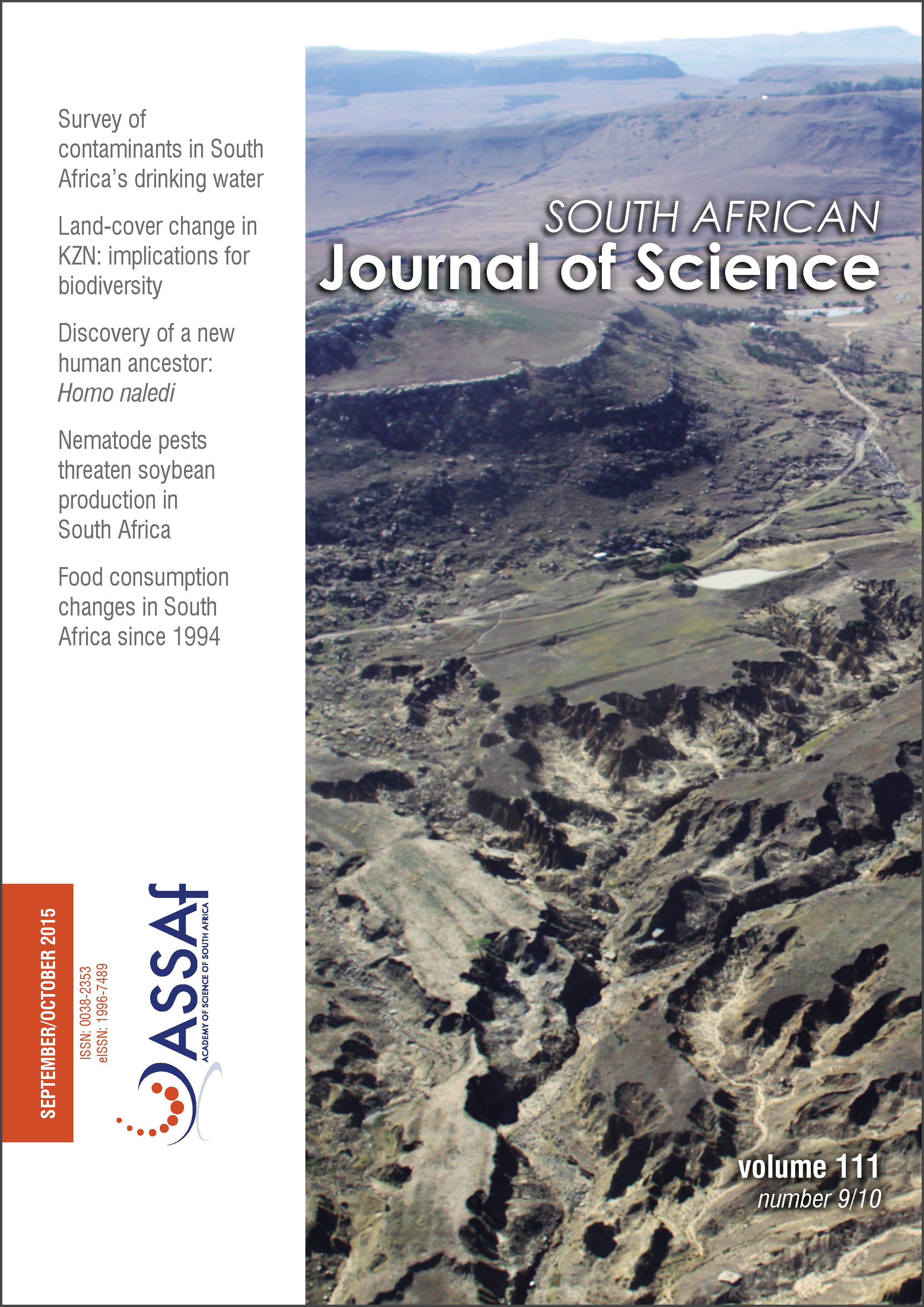Studies on CO variation and trends over South Africa and the Indian Ocean using TES satellite data
DOI:
https://doi.org/10.17159/sajs.2015/20140174Keywords:
Aura satellite, remote sensing, carbon monoxide, vertical profile, annual trendAbstract
In this study, we used measurements from the tropospheric emission spectrometer aboard the Earth Observing System’s Aura satellite over South Africa, Madagascar and Reunion Island to investigate variations and trends in tropospheric carbon monoxide (CO) over 5 years, from 2005 to 2009, and at 47 pressure levels from 1000 hPa to 10 hPa. We believe that the study is the first of its kind to address the use of space-borne data for CO distribution over southern Africa. Maximum CO was recorded during spring and minimum during summer. Positive anomalies were identified in 2005 and 2007 during the spring and negative anomalies in the beginning of the year (especially in 2006, 2008 and 2009). The estimated trends based on a linear regression method on inter-annual distribution predicted a decreasing rate of 2.1% per year over South Africa, 1.8% per year over Madagascar and 1.7% per year over Reunion Island. The surface CO measurements made at Cape Point station (34.35°S, 18.48°E) showed an average decline of 0.1 ppb per month, which corresponded to 2.4% of the average annual mean for the studied period. The observed decrease in CO was linked to the La Niña event which occurred in 2006 and 2008 and a declining rate of biomass burning activity in the southern hemisphere over the observation period. TES measurements are in agreement with ground-based measurements and can be used with confidence to complement CO measurements for future analyses over the southern tropics and middle latitude.
Published
Issue
Section
License

All articles are published under a Creative Commons Attribution 4.0 International Licence
Copyright is retained by the authors. Readers are welcome to reproduce, share and adapt the content without permission provided the source is attributed.
Disclaimer: The publisher and editors accept no responsibility for statements made by the authors
How to Cite
- Abstract 478
- PDF 629
- EPUB 216
- XML 272












.png)